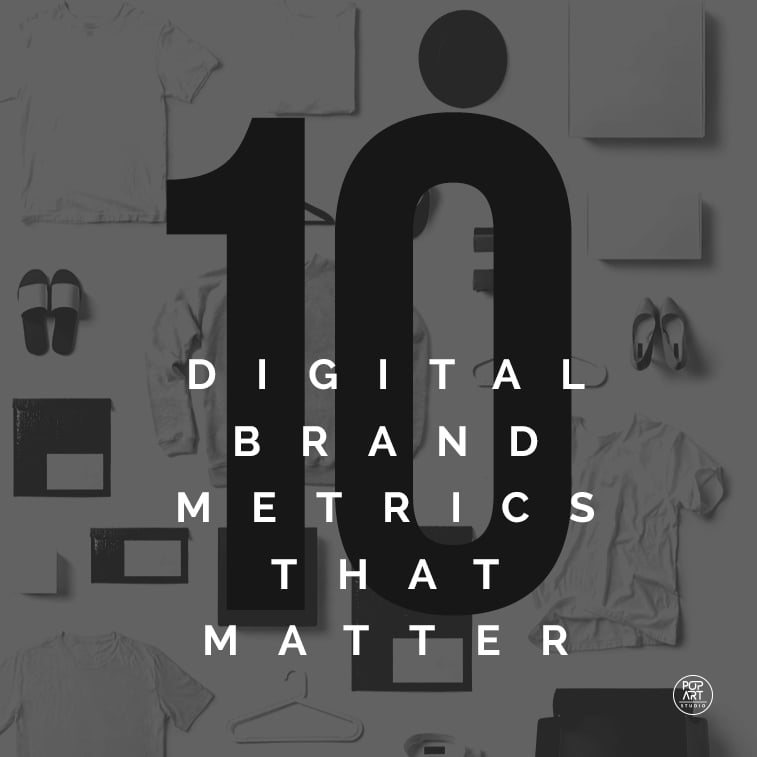We have all been there: an upset client calls up your manager to express their very personal feeling of the campaign. This happens all the time in digital marketing.
If you have been at the center of one such stormy situation, then you probably know how hard it is to express your professional feelings in a calm manner: show them the facts. The biggest issue is that they do not seem to see the things that really matter: metrics. The only problem is that digital marketing success cannot be measured or expressed in simple words or numbers. There is a set of variables that show a brand’s performance in the digital world.
Marketing Land expert Peter Minnium explains that today we are being bombarded with thousands of variables that do not actually signify quality, so he has jotted down a list of 10 digital brand metrics substantive for every digital brand.
How To Assess What Measures Matter?
Just to be clear, what Minnium suggests is that you should not go by the “the more the merrier” saying. Quite the opposite.
The more metrics you look, the more chaotic your results will be.
Therefore, instead of going delirious about all the possible metrics you can find on the Internet, what you should do first is to draw up a list of those which matter to you (e.g. brand uniformity, followers, interactions – likes, shares, retweets, ROI, etc.) and then narrow down to those you believe are working for you. By eliminating the unnecessary ones (such as page views), you will be able to focus on improving those that bring your results.
The next step is going through these 10 brand metrics.
10 Digital Brand Metrics That Matter
#1 Impressions.
Impressions represent a number of people(‘s devices) the ad has reached since its launching. Even though it was debated over the years, the Association of National Advertisers solved this issue by giving clear guidelines about their measurability.
#2 In-view time.
In-view time represents a time period which a consumer was exposed to an ad, i.e. the time they have spent on viewing it. In-view time can be measured in seconds (before closing the window or scrolling down a banner) or even minutes (on high-quality sites). The success of this metric is shown in ad success – it is considered to have been successful if it has done its job and if the consumer can ultimately remember it.
#3 Visibility.
Visibility is a major factor in native advertising – this variable is measured in surveys which check if people can recall brands via unbranded merchandise (i.e. if they remove the visual components, such as logo, distinctive shape, music, etc.).
#4 Brand linkage.
The thing about social media is that they are the perfect place for your brand to be recognized. It is, thus considered that a virtual image of your brand has to be the same (uniform) on all social media. This means going beyond the principles of corporate identity – all over the digital world, including ads. Therefore, apply branding principles even on the smallest things.
#5 Universal interaction rate.
According to Minnium, the basic measure of physical attention is “[t]he percentage of impressions in a campaign where a user entered the ad frame and remained active (not parked) for an agreed period (the IAB suggests 0.5 seconds).” This signifies the percentage of your users’ interaction with your ad/content.
#6 Universal interaction time.
Similarly to #5, universal interaction time is the time a user spends on viewing the ad – which should stand out from the crowd AND change their behavior (inspire them to share it, interact in some other way or buy the product/service).
#7 Persuasion
A change in behavior has been mentioned in #6, and it is definitely one of the goals every digital marketing campaign has. If a change in behavior (visits, purchase, ROI) is noticeable after seeing an ad or some other way of promotion (test drive, CTA), then the digital campaign can be considered successful.
#8 Brand favorability.
When it comes to consumer-brand relationship, this measurement inspects if the consumers feel more positive towards a brand after they have experienced some form of advertising. In this respects, brands need to pay attention to two things: affinity and relevance. The former one means brand closeness, and the latter one – “how well the brand meets a consumer’s personal needs,” says Minnium.
#9 Retransmission.
This one roughly depicts recommendations. It appears that viewers are more likely to consume a brand if their family & friends recommend them. This thus leads to marketers creating ad content that is shareable in its nature, that promotes discussion, both online and offline.
#10 Sales (CTR)
And the last, but not the least. Click-through rate (CTS) is still the leading variable in trying to determine which ads work and which do not, so make sure to include it in your clients’ metrics reports.
All in all, if some of these metrics do not work for you or your clients – you can simply ditch them. But it is nice to know that there are actually people who monitor on what matters in the digital world, especially now when we are so overwhelmed by the amount of information.





